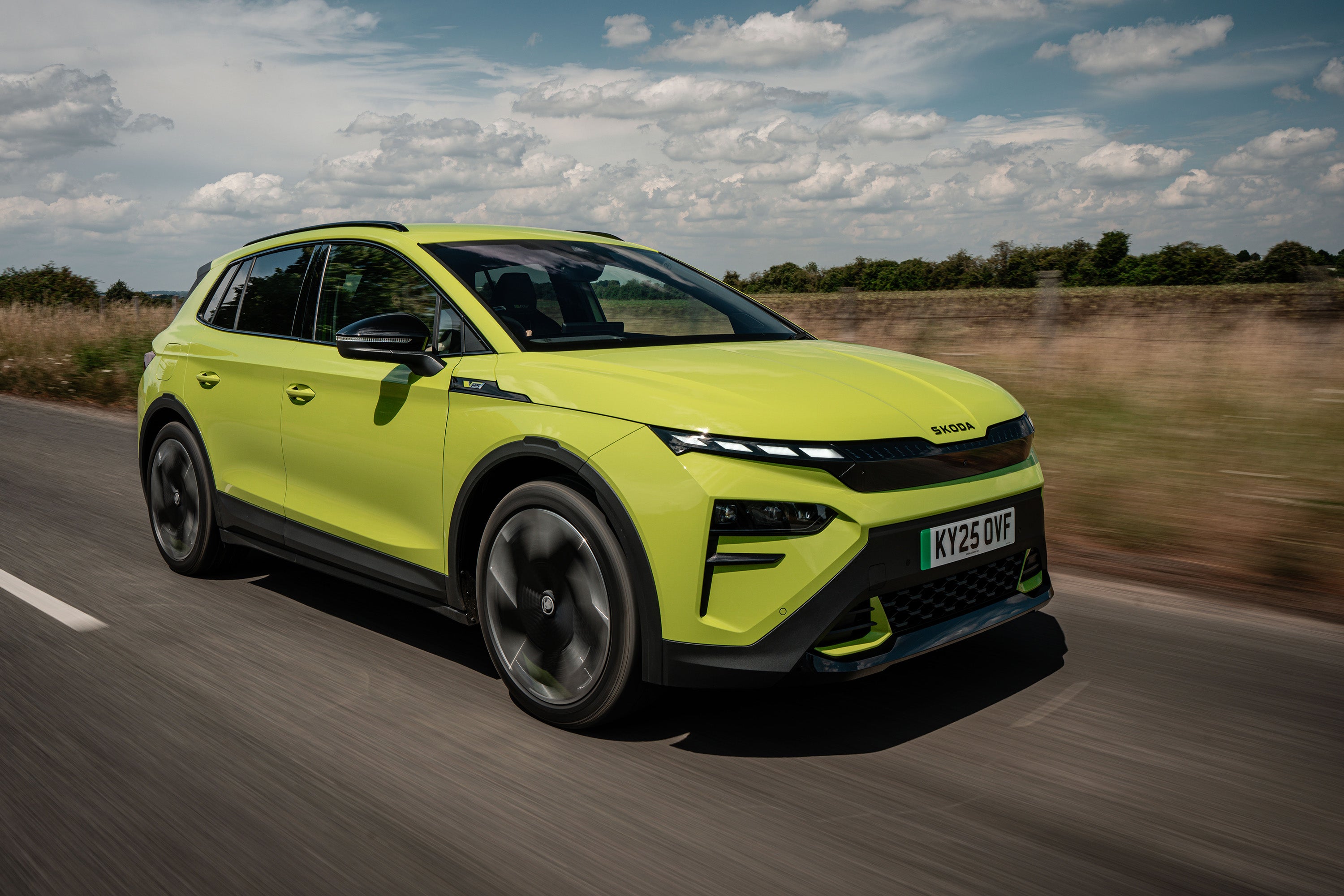Skoda Elroq vRS Review 2025: Price, specs & boot space
Written by Matt Robinson
Quick overview
Pros
- Great level of standard equipment
- Looks sharper than the standard model
- Quick straight-line performance
Cons
- Not especially exciting to drive
- Lack of physical climate controls is annoying
- Not much faster than the cheaper Elroq 85
Verdict: Is the Skoda Elroq vRS a good car?
"The Skoda Elroq vRS offers up a hefty dose of deja vu, underwhelming as a performance car in exactly the same way as the Enyaq vRS. It's heavily loaded with kit, though, and priced fairly, so it makes sense if you want all the bells and whistles plus strong straight-line performance."
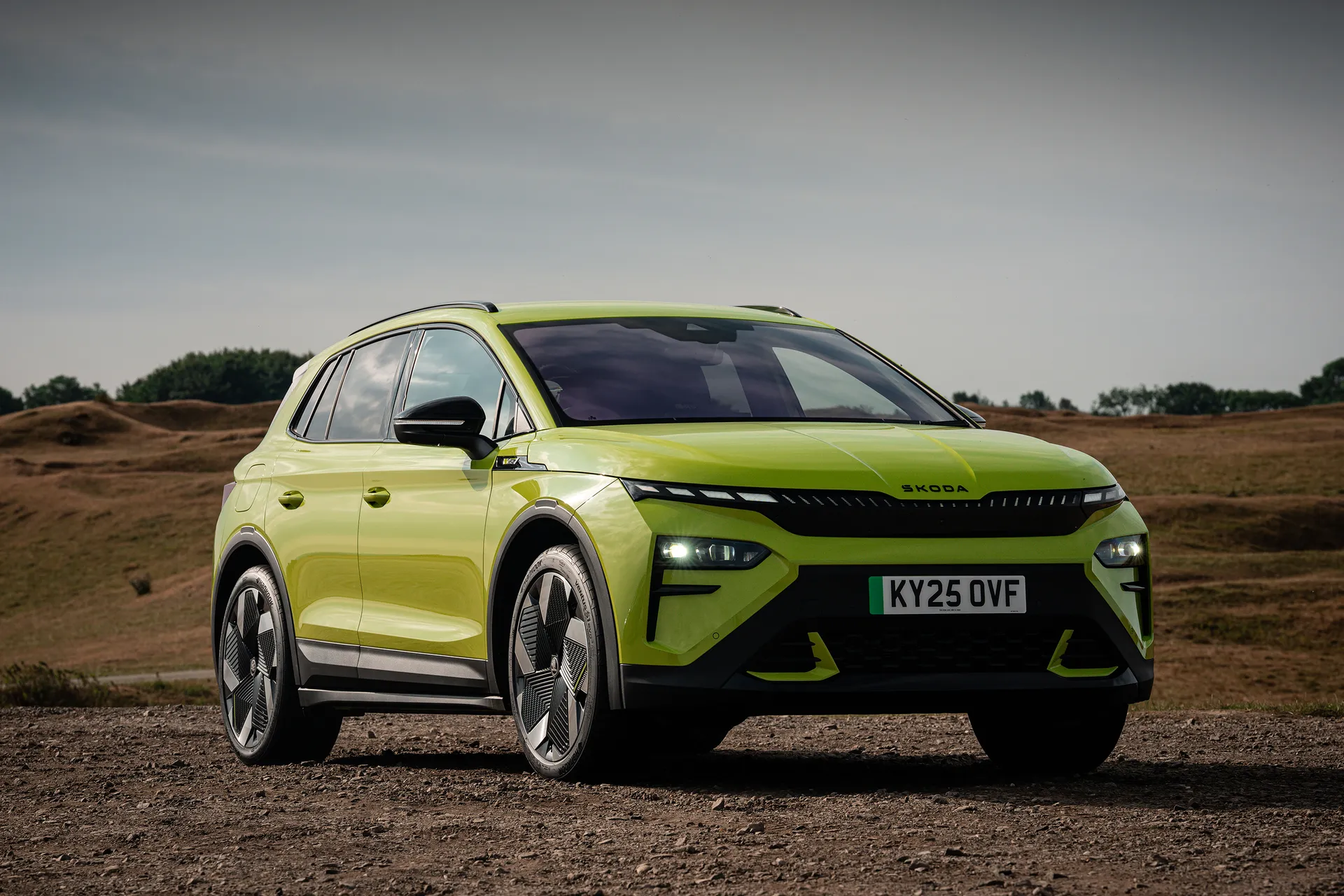
We can't be too mad or surprised that the Skoda Elroq vRS isn't hugely exciting. Leaving the closely related Skoda Enyaq vRS to the side for one moment, it's worth noting that a lot of vRS-badged products aren't exactly capable of setting your trousers on fire. The old diesel-powered Octavia vRS, for example, or the plug-in hybrid version after that.
In any case, the Elroq vRS shouldn't be discounted just because it isn't the most thrilling EV in the world. For one thing, it injects a healthy dose of colour into the normally subdued Elroq colour palette with the fabulous, vRS-exclusive Hyper Green, which can be specced at no extra cost.
You also get a good uplift in equipment, ensuring you aren't just paying an extra £5,000 for extra performance, which would have been a tougher sell. On that front, the Elroq vRS comes with an extra motor for the front axle, providing the car with all-wheel drive and a total of 340PS and 545Nm of torque. Healthy numbers, but bear in mind the Elroq 85 isn't all that far behind, offering 286PS.
Aside from your wallet being a bit lighter, there aren't any significant compromises to picking a vRS over a single-motor Elroq. The drop in efficiency is marginal, it's just as practical, and barely any less comfortable, with Skoda taking a very measured approach with the ride comfort. Something a lot of rivals could take note of.
Looking for a used car for sale? We've got 100s of Skoda Approved Used Cars for Sale for you to choose from, including a wide range of Skoda Elroq cars for sale.
Is the Skoda Elroq vRS right for you?
If you're interested in the Enyaq anyway and were contemplating one of the higher-end models with the bigger battery and with a few options added, it might well do. The jump between the 85 SportLine and the vRS is a reasonable one, considering the extra equipment and performance you're getting in return. Unless you're regularly doing long trips, though, we reckon you're better off with one of the Elroq 60 models.
Genuinely after an engaging electric performance car? You're better off looking elsewhere. Although it's not in the same class, the Abarth 600e is one of the few sub-£50k EVs we've driven that's truly fun to drive.
What's the best Skoda Elroq vRS model/battery to choose?
There's only one version. All you need to decide is what individual options and/or option packs to add in the configurator. Despite the standard spec being very high, there are still a few boxes you might want to tick, including one for an energy-saving heat pump, which we'd definitely recommend getting.
What other cars are similar to the Skoda Elroq vRS?
The most similar is the larger Enyaq vRS. It uses the same platform, battery and twin-motor setup as the Elroq vRS, and even completes the 0-62mph time in exactly the same time. That's because, despite the Enyaq being a bit longer, it's only 10kg heavier.
Also very similar is the Ford Explorer, which, again, is on the same platform. The AWD Extended Range version uses the same battery and motor combination as the Elroq vRS, but it's a lot more expensive at £53,985.
The MINI Countryman SE All4 offers a similar amount of space and performance for a little less, while the Volvo EX30 is available with a Dual Motor powertrain for a similar price to the vRS. It offers an astonishing 3.6-second 0-62mph time. Whether or not that's necessary in a car like the EX30 is debatable, though.
Comfort and design: Skoda Elroq vRS interior
"Skoda hasn't gone mad in differentiating the vRS version of the Elroq's cabin, but perhaps that's not such a bad thing given how nice the standard interior is."
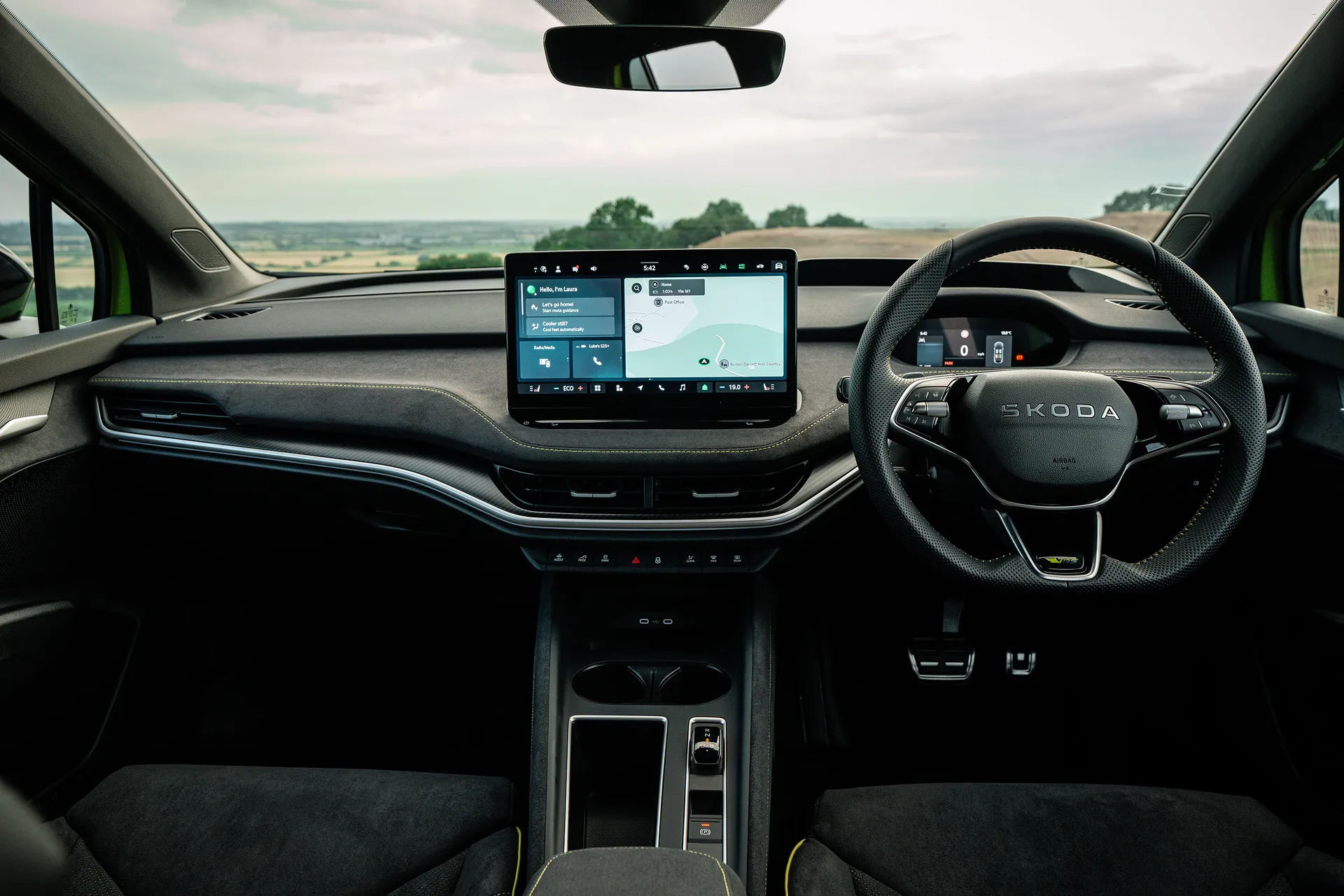
Some green stitching, a vRS badge on the steering wheel and some microsuede trim (which is a bit like Alcantara) is about the extent of it. We already liked the cabin in other versions of the Elroq, which looks modern and neatly designed. And, it must be said, smarter than cars from other brands using the same Volkswagen Group 'MEB' platform.
Like all those cars, you only get a diddly five-inch digital instrument cluster, here embedded into the dashboard with an adorable little cowl over the top to reduce glare. That might seem small when driver displays over 10 inches are becoming the norm, but really, you don't find yourself wanting for any additional information.
The seats are comfortable and supportive, but if you're expecting a traditional lofty SUV driving position, you'll be a bit disappointed. It's much the same in the Enyaq, whose cabin is scarcely different from the Elroq's.
Quality and finish
The new microsuede trim further smartens up what's already a premium-feeling cabin. Much like the bigger Enyaq, the Elroq feels a cut above some other cars using the same platform, including the Volkswagen ID.4, which was always a bit disappointing in terms of material choice. Things feel higher quality here, and everything is put together brilliantly. The only question mark is how well that microsuede stuff will stand up to kids clawing at it with greasy hands.
Infotainment: Touchscreen, USB, nav and stereo in the Skoda Elroq vRS
The 13-inch infotainment system here is largely the same here as it is in any other Elroq. We've no issue with the unit itself, with crisp graphics, a logical menu system and a good level of responsiveness.
What we're less keen on is having to use it for climate functions. The Kodiaq and Superb feature 'proper' physical knobs and buttons for this, but the Elroq isn't so lucky. For most functions, you'll need to open up a dedicated climate window on the screen, and while the temperature controls for the two front climate zones are displayed permanently along the bottom, they're not massive and thus a bit tricky to tap on the move.
The navigation works well, if not quite well enough to stop many from ditching it for something like Google Maps and taking advantage of the standard-fit wireless Apple CarPlay and Android Auto connectivity.
The 12-speaker Canton sound system, normally part of the £2,200 Advanced package on other Elroq models, is fitted here as standard. Canton might not be as recognisable a brand as something like Bose or Harman Kardon, but it's a great setup.
Space and practicality: Skoda Elroq vRS boot space
There are no practicality compromises in picking the vRS over any other Elroq. The cabin is just as spacious, and the boot space is no different at 470 litres. That figure seems a little disappointing when the Enyaq has 115 litres more despite being a mere 16cm longer, but it's competitive with the Elroq's rivals.
The Ford Explorer is no different, which might have something to do with it sharing a platform with the Enyaq. An Kia EV3 is slightly behind, but it does get a 'frunk' luggage compartment under the bonnet. As does the Volvo EX30, and a good-sized one at 61 litres, but that doesn't make up for the disappointing 318 litres of space in the boot.
With the 60/40 split rear bench in the Elroq folded flat, there's a total of 1,580 litres of space available. There's also a neat luggage net under the parcel shelf which is intended for charging cables.
Space inside the cabin is decent, with lots of room up front and good head and legroom in the back. There's a storage tray (with a wireless phone charging pad) tucked under the dashboard, and by the gear selector, there's a long, thin, but reasonably deep cubby.
Between these two elements is a dual cupholder with an adjustable divider, so whether you like your hot drink tall or venti, a snug fit should be fine.
Handling and ride quality: What is the Skoda Elroq vRS like to drive?
"The Elroq vRS is competent and reasonably capable, but like the bigger Elroq vRS, it's not what you'd call exciting."
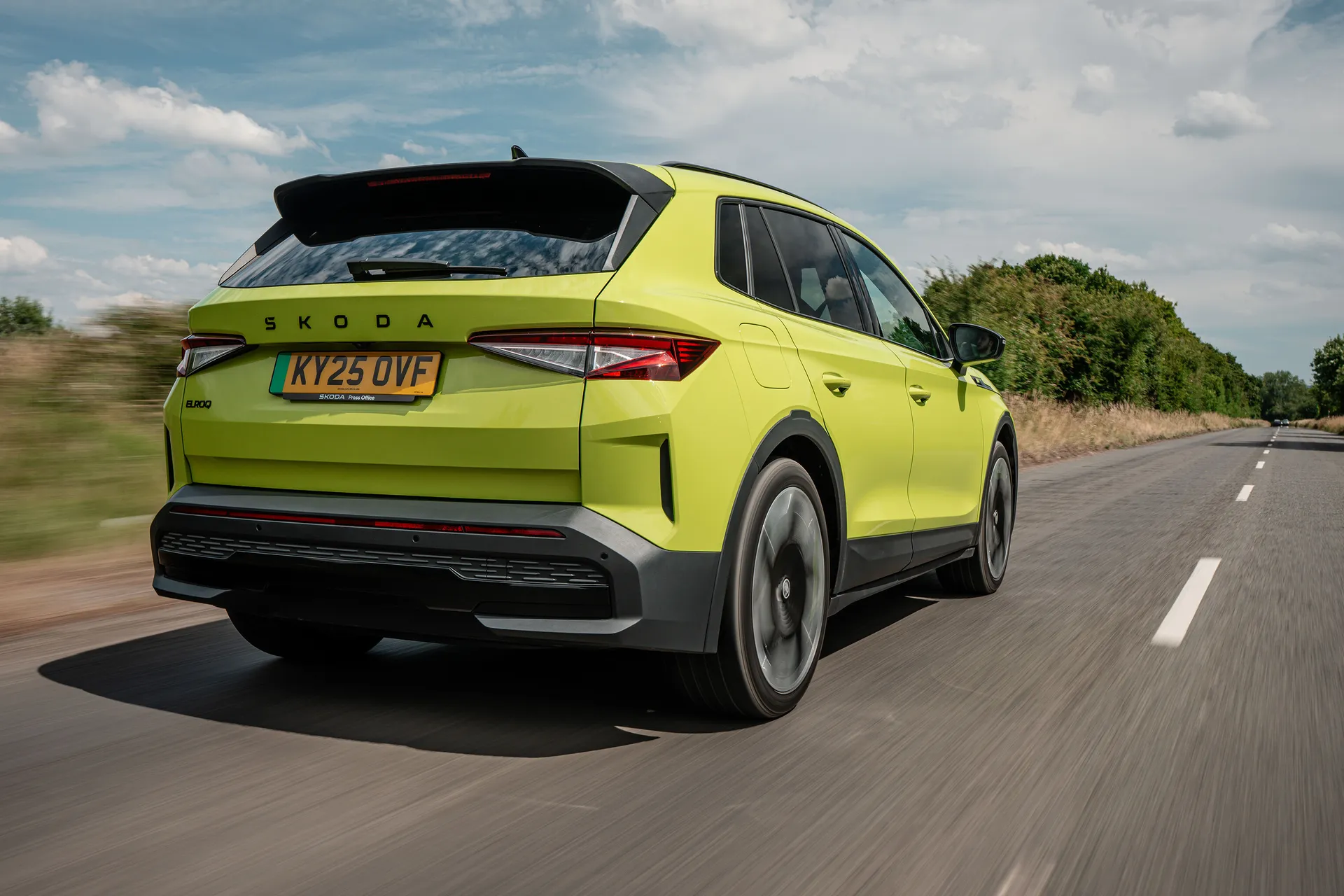
To Skoda's credit, the engineers haven't simply slapped in an extra motor, added a lurid new colour option and called it a day. vRS versions of the Elroq sit slightly lower, come with retuned adaptive dampers and tweaked steering.
The result, though, is nothing particularly thrilling. It's certainly competent, resisting body roll well and offering a good amount of front grip plus decent traction from the new all-wheel drive setup, but the whole experience is lacking a bit of sparkle. A lack of internal combustion engine doesn't help, but the Abarth 600e, for example, counters this by being a bit scrappy and unrefined in its power delivery. In the Elroq vRS, everything is just effective rather than fun.
We would like to single out the adaptive dampers for praise, however. All too often with these setups, we find ourselves just going for the softest setting possible to get some modicum of ride comfort on badly-surfaced UK roads, but the bandwidth available here is great.
If anything, the softest settings are a bit too slack, causing the body to bob up and down a fair bit. You only need to dial them up a little bit to get more control, though, using a sliding scale with 15 points of adjustment. That sounds like a lot, but you can just whack them up to full and the Elroq vRS still feels like it's flowing with the undulations of the road surface well, rather than smashing over every little hump and yump.
What motors and batteries are available in the Skoda Elroq vRS?
The Elroq vRS is only available with the 82kWh battery shared with the '85' versions of the Elroq. This comes with a dual-motor powertrain, giving all-wheel drive. It's the only Elroq configured this way.
Together, the motors develop 340PS and 545Nm of torque, making for 0-62mph in 5.4 seconds. That was enough to make the Elroq Skoda's fastest accelerating car ever, but it now has to share that honour with the updated Enyaq vRS, which had a tenth of a second knocked off its time thanks to software tweaks.
Surprised the 0-62mph time is the same on each? So were we, until we checked the weight figures and discovered that despite the reasonably significant size difference between the two cars, there's only 10kg in it according to the official figures.
In any case, the Elroq vRS does feel quick, providing enough thrust to pin you into the lovely sports seats for a good while, before things taper off a bit approaching the national speed limit. The throttle response is sharp in all modes.
Compared to some electric performance cars, though, the Elroq's straight-line pace isn't anything too dramatic. Just look at the Twin Motor version of the Volvo EX30, which will hit 62mph from rest in 3.6 seconds. That's as fast as a BMW M5, for Pete's sake.
Skoda Elroq range vRS: How far can you travel on a charge?
Despite packing an extra motor and more power relative to the Elroq 85, the range only drops slightly from 360 miles to a still very impressive 339 miles.
The 'real-world' range will be less than that, but we've experienced good efficiency from other Volkswagen Group EVs using the same technology recently, so you might be able to get reasonably close at warmer times of year and with a mix of urban and motorway driving. The one caveat is that deploying the full might of both of those motors is going to hamper your range more than putting your foot down in an Elroq 85 might do.
To put that 339 miles in context, the closely related Ford Explorer AWD Long Range is, as you might expect, very similar, offering up to 329 miles. The Volvo EX30 Twin Motor trails the pair of them at 280 miles.
Refinement and noise levels
EVs need to be especially well-sorted when it comes to wind and road noise, as there's no engine sound to help drown either of those out. The Elroq vRS delivers in this regard, despite having bigger wheels than a lot of other Elroq models. It really is very hushed in there, whether you're pootling along or at motorway cruising speeds.
Safety equipment: How safe is the Skoda Elroq vRS?
The Elroq hadn't been tested by Euro NCAP at the time of writing, but all other MEB platform cars, including the very closely related Enyaq, have achieved the full five stars. We're expecting the same for the Elroq.
It's well specified in terms of safety equipment, including lane assistance, blind spot detection, a forward collision warning with automatic braking that can pick up pedestrians and cyclists as well as other cars and a driver attention monitor.
In terms of passive safety, there are front, side and curtain airbags, and three Isofix mounting points – two on the rear bench and a further one for the front passenger seat.
Skoda Elroq vRS charging times: How much does it cost to charge?
"The vRS charges at a slightly faster rate than other Elroq models, meaning it's possible to take the battery from 10-80% in under 30 minutes."
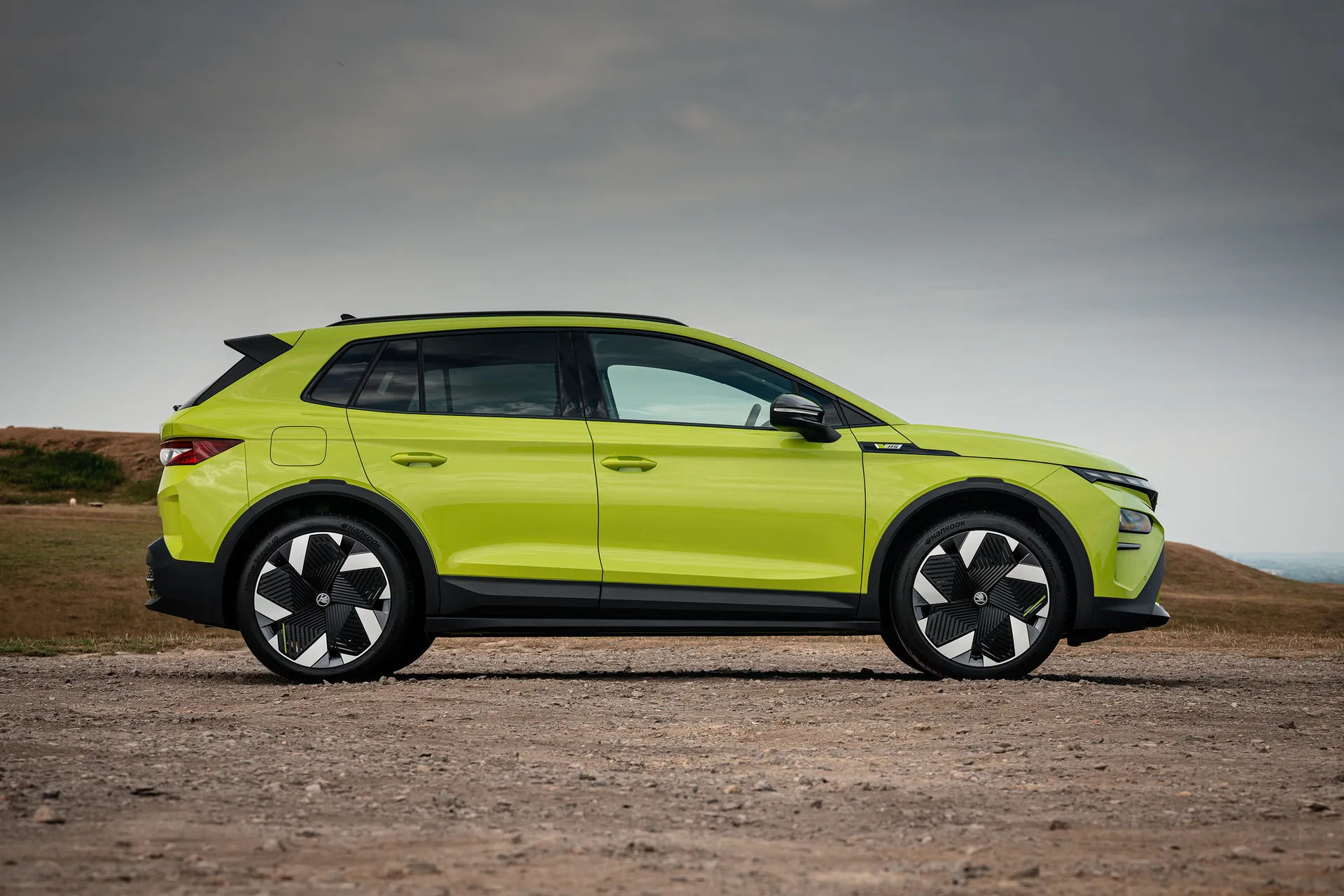
Whether or not it takes that long depends on a number of factors, including, of course, how fast a charger you're plugged into, plus the ambient conditions at the time.
If you're charging at home, you can bank on it taking about 12 hours using a 7.4kW home wallbox to go from near empty to full. It'll take three or more times as long via a three-pin plug, which generally isn't a recommended way of recharging anyway.
In either instance, it'll cost you about £20 to fully charge the battery on the average UK tariff, but if you can get yourself onto a variable product and time your charging habits to suit, that figure could be slashed considerably.
Skoda Elroq vRS reliability and warranty
Although the vRS and the Elroq range as a whole is quite young, it does use technology from the Volkswagen Group that's well proven at this stage, and a lot of the teething issues experienced by cars like the ID.3 should have been ironed out by now.
We've heard of no serious issues with the closely related Enyaq, and Skoda owners must be happy about the reliability of their vehicles, with the brand as a whole placing fifth out of 33 manufacturers in the reliability section of the most recent Satisfaction Index survey from our sister title HonestJohn.co.uk.
Skoda's warranty is nothing special, though. Lasting three years and 60,000 miles, it's the bare minimum of what we'd expect, with some rivals offering five years or more and up to 100,000 miles. As is standard for EVs, the battery has separate coverage lasting up to eight years or 100,000 miles.
Skoda Elroq vRS insurance groups and costs
As the fastest, most expensive Elroq, it's no surprise that the vRS is in the highest insurance group of the lot – group 37 of 50. That's a long way above the entry-level Elroq SE 50, which is only in group 22, but on the other hand, it's only a few spots above an 85 Sportline in group 34.
VED car tax: What is the annual road tax on a Skoda Elroq vRS?
There's a double dose of bad news on this front. Firstly, EVs are no longer exempt from paying Vehicle Excise Duty (VED), so it's the same £195 annual charge for the Elroq vRS as it is for any petrol, diesel and hybrid car. Secondly, EVs don't get out of the government's premium car tax supplement either.
For models lower down the Elroq pecking order, this isn't a problem. The Elroq vRS, however, is far beyond the £40,000 threshold, so you'll be shelling out an additional £425 from years two to six of ownership.
Skoda Elroq vRS price
"The Elroq vRS is comfortably the most expensive car in the range, but you're getting more than just the extra performance to justify the premium."
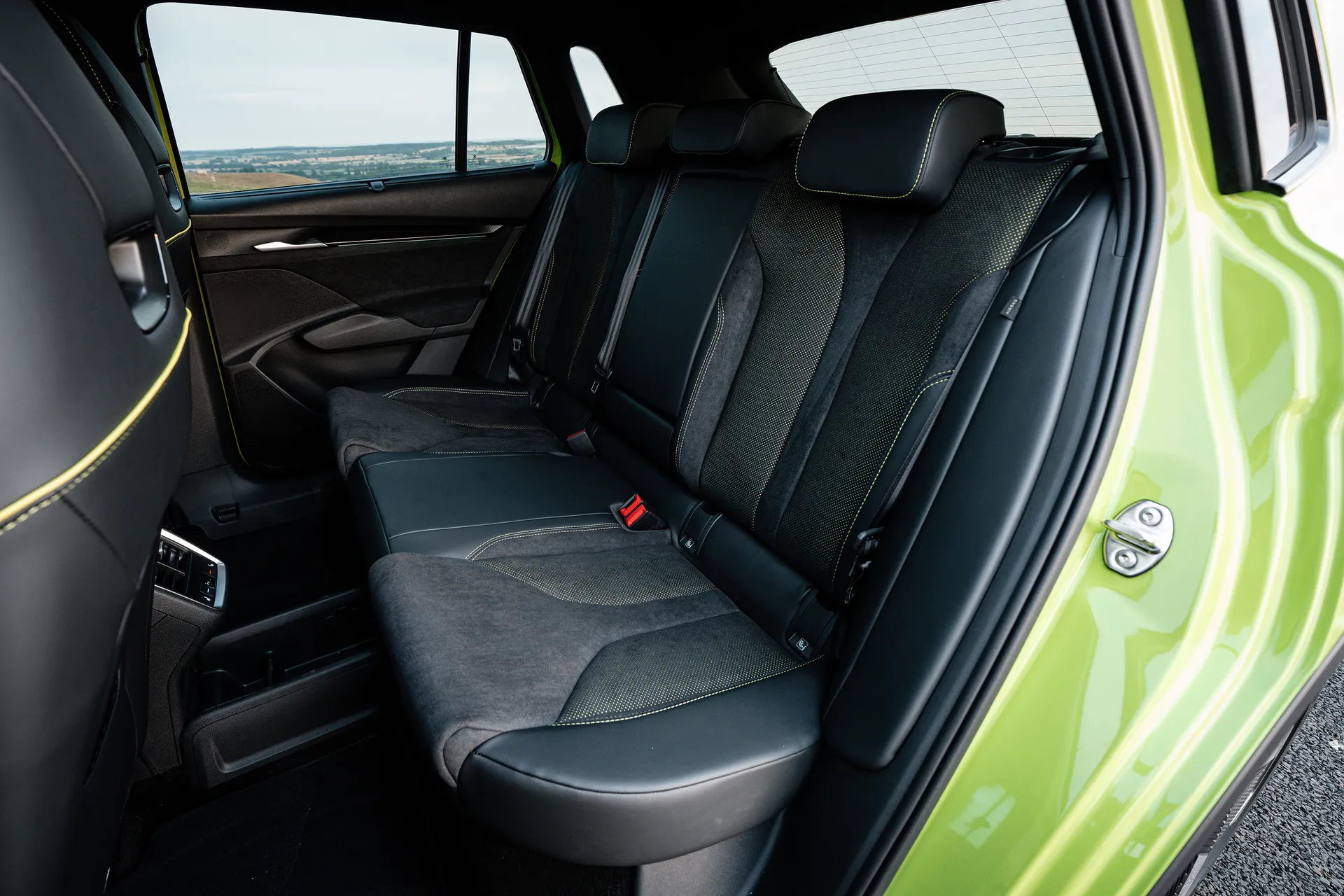
The starting price of £46,560 puts the Elroq vRS just under £5,000 ahead of the Elroq 85 Sportline. We're not sure the extra performance on its own is worth the premium, so it's just as well that Skoda also gives you a beefed-up spec.
You get everything from the £2,200 Advance pack fitted for free, including the excellent 12-speaker Canton audio system. Because of this, upgrading to the Maxx pack then becomes cheaper at £1,100, compared to £3,300 on Elroq models lower down the pecking order. We feel like you shouldn't have to spend an extra £1,100 on an energy-saving heat-pump, though.
The vRS is priced competitively with rivals. It's around about the same as a Volvo EX30 Twin Motor, and a lot cheaper than the £54k Ford Explorer AWD Long Range, which also lacks a standard heat pump despite being so much more expensive than the Skoda.
You can get behind the wheel for a very small monthly outlay if you're running the vRS as a company car, with EVs enjoying a super-low 3% Benefit in Kind (BiK) tax rate. Another way to save is to wait around for a pre-registered model – judging by the deals we've already seen on other Elroq models, you should be able to get a good few thousand off.
Trim levels and standard equipment
The vRS is a single trim level at the top of the Enyaq range, and as such, it comes with plenty of equipment. There are 20-inch wheels in a design exclusive to the vRS, matrix LED headlights, LED rear lights, a power-operated boot, dual-zone climate control, ambient lighting, keyless entry and start, a heated leather steering wheel, heated front seats with an electrically adjustable driver's seat, a head-up display, a 360-degree parking camera plus front and rear sensors, and a 13-inch infotainment screen.
Ask the heycar experts: common questions
What does Skoda vRS mean?
How much does the Skoda Elroq vRS cost?
How fast is the Skoda Elroq vRS?
Get our latest advice, news and offers
Keep me updated by email with the latest advice, news and offers from heycar.
By submitting you agree to our privacy policy
